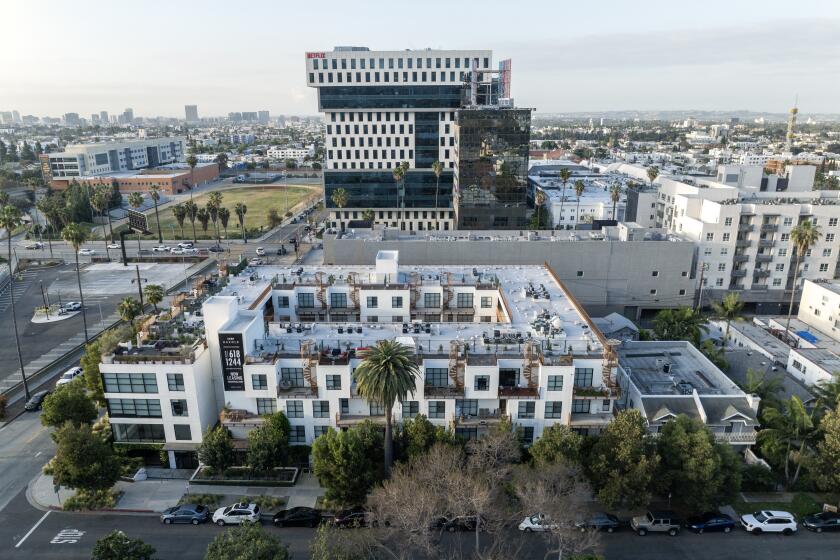Confusion Spurs 2-Week Delay of Final Vote : County Backs New ‘Cluster’ Development Rules
Seeking to better regulate a method of housing development that San Diego County Supervisor Brian Bilbray described as “the best and the worst of planning,” the county supervisors on Wednesday tentatively approved new guidelines for “clustering” projects.
After four hours of technical debate that frequently left many land-use lawyers, community activists and the supervisors themselves confused, the board supported a series of proposed new regulations governing the use of clustering, a process that allows developers to build high-density residential projects in areas zoned for low-density construction.
Wednesday’s debate, the culmination of a more than year of study, was laden with a confusing blur of statistics and land-use acronyms that caused many speakers to confess that they could not say whether they were for or against the proposal--or, for that matter, even accurately describe it.
Ends in Uncertainty
The most dramatic manifestation of that confusion was the fact that the meeting ended with considerable uncertainty over precisely what the supervisors’ vote had--or had not--accomplished.
While many left the hearing believing that the board had merely delayed a decision for two weeks, officials explained later that the 4-1 vote, with Supervisor John MacDonald dissenting, actually represented a tentative approval that could either be ratified or altered when the subject faces final board action on May 20.
“Then again, they may wake up in the morning and say, ‘We did what?’ ” an aide to one supervisor said, only half-jokingly.
In fact, Supervisor George Bailey specifically requested the two-week delay to give the county staff and his fellow supervisors time to review Wednesday’s action in order to insure that the amalgam of last-minute amendments and what MacDonald termed “seat-of-the-pants engineering planning” accurately represented their intentions.
Pending the supervisors’ final action, an existing moratorium on cluster projects scheduled to expire this month also will be extended.
Under San Diego County’s current clustering policy, developers may build higher residential densities in some portions of a project in exchange for providing substantial open space throughout the development. For example, if a developer owns 200 acres of land in an area zoned for 2-acre lots, he would be entitled to build 100 homes. Rather than building them on similar 2-acre parcels, the developer could “cluster” all 100 units on a few acres, leaving most of the remainder of the property as open space.
Developers argue that the policy offers a fair trade-off that enhances design flexibility and preserves sensitive environmental features.
Environmentalists and some community groups charge, however, that developers have sometimes used the policy to circumvent zoning laws, and complain that the open space surrounding the clustered housing often consists of steep, unusable property or private golf courses. Critics also contend that cluster projects often produce urban-style developments inappropriate for rural or so-called “estate” areas of the county.
1-Acre Minimum Lot Size
Addressing those concerns, the measures tentatively approved Wednesday would, among other things, establish a 1-acre minimum lot size throughout the county’s unincorporated areas. With community approval, that minimum size could be reduced to one-half acre if the area is served by sewer lines and the resulting development would be compatible with the surrounding region.
Despite the complaints about golf courses being classified as open space, the supervisors decided that open space in cluster projects need not be reserved for the exclusive use of the developments’ residents. In other words, open space, as defined by the cluster ordinance, is not limited to simply parks and undeveloped property. The supervisors’ action would, however, give residents the right to approve any changes in the use of a project’s open space.
Projects covering more than 100 acres located in certain specific areas of the county would be exempt from the new provisions, on the theory that clustering permits more creative development of large-scale projects. Some North County community activists argued, however, that the exemption could seriously undermine the new plan and become, as one put it, “a Trojan horse that allows developers to bring in other projects.”
But the supervisors and others argued that there are adequate protections in the measure to insure that rural communities such as Fallbrook will not be overrun with urban-style cluster developments.



